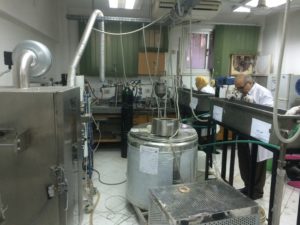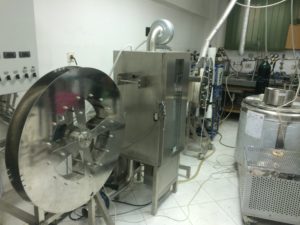HFMs: are a class of artificial membranes containing a semi-permeable barrier in the form of a hollow fiber. Originally developed in the 1960s  for reverse osmosis applications, hollow fiber membranes have since become prevalent in water treatment, desalination, cell culture, medicine, and tissue engineering. Most commercial hollow fiber membranes are packed into cartridges which can be used for a variety of liquid and gaseous separations.
for reverse osmosis applications, hollow fiber membranes have since become prevalent in water treatment, desalination, cell culture, medicine, and tissue engineering. Most commercial hollow fiber membranes are packed into cartridges which can be used for a variety of liquid and gaseous separations.
spinneret: is a device used to extrude a polymer solution or polymer melt to form fiber. Streams of viscous polymer exit via the spinneret into air or liquid leading to a phase inversion which allows the polymer to solidify.

The individual polymer chainst end to align in the fiber because of viscous flow. This air stream liquid-to-fiber formation process is similar to the production process for cotton candy. The fiber production process is generally referred to as “spinning”.
Depending on the type of spinneret used, either solid or hollow fibers can be formed. Spinnerets are also used for electroplating and electroplating applications. They are sometimes called coaxial needles, or coaxial emitters.
Microwaves: form of electromagnetic radiation with wavelengths ranging from one meter to one millimeter; with frequencies between 300 MHz (100 cm) and 300 GHz (0.1 cm). Different sources define different frequency ranges as microwaves; the above broad definition includes both UHF and EHF (millimeter wave) bands. A more common definition in radio engineering is the range between 1 and 100 GHz (300 and 3 mm). In all cases, microwaves include the entire SHF band (3 to 30 GHz, or 10 to 1 cm) at minimum. Frequencies in the microwave range are often referred to by their IEEE radar band designations: S, C, X, Ku, K, or Ka band, or by similar NATO or EU designations.
 Mechanical Engineering Department, National Research Centre Mechanical Engineering Department, National Research Centre
Mechanical Engineering Department, National Research Centre Mechanical Engineering Department, National Research Centre